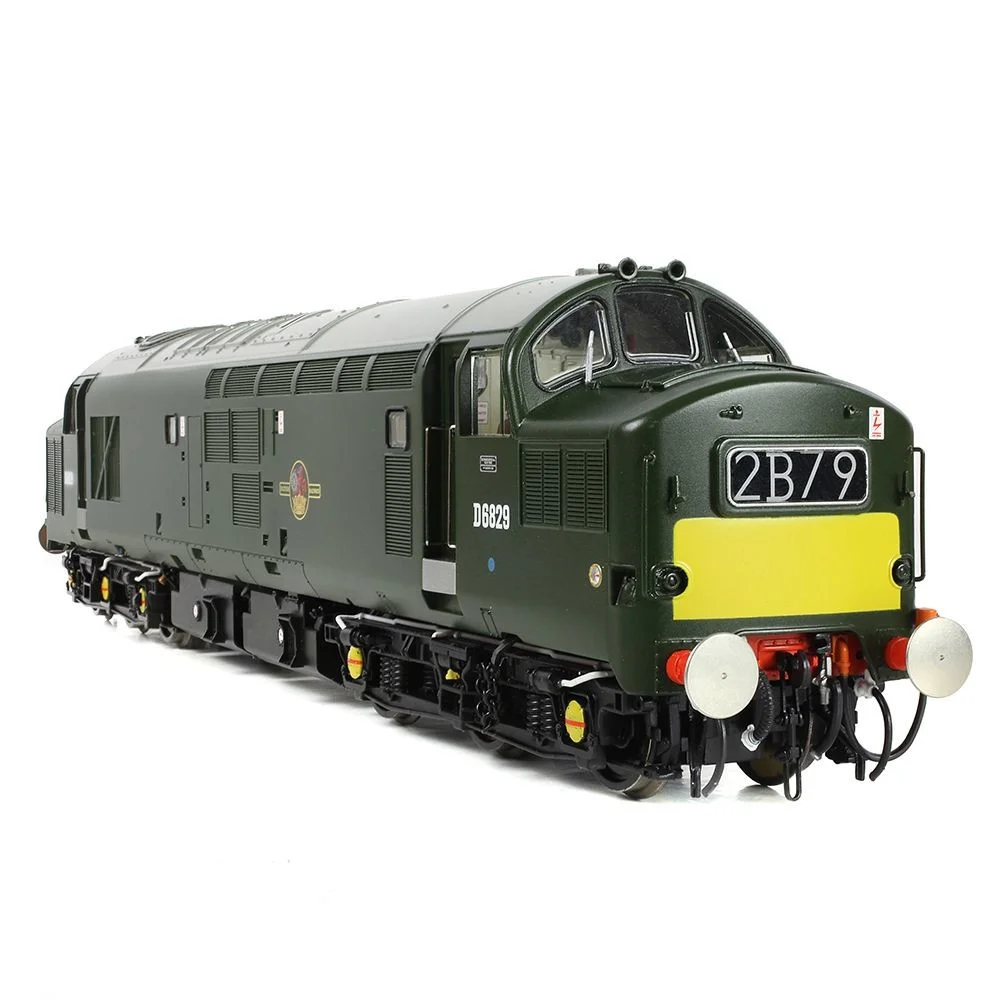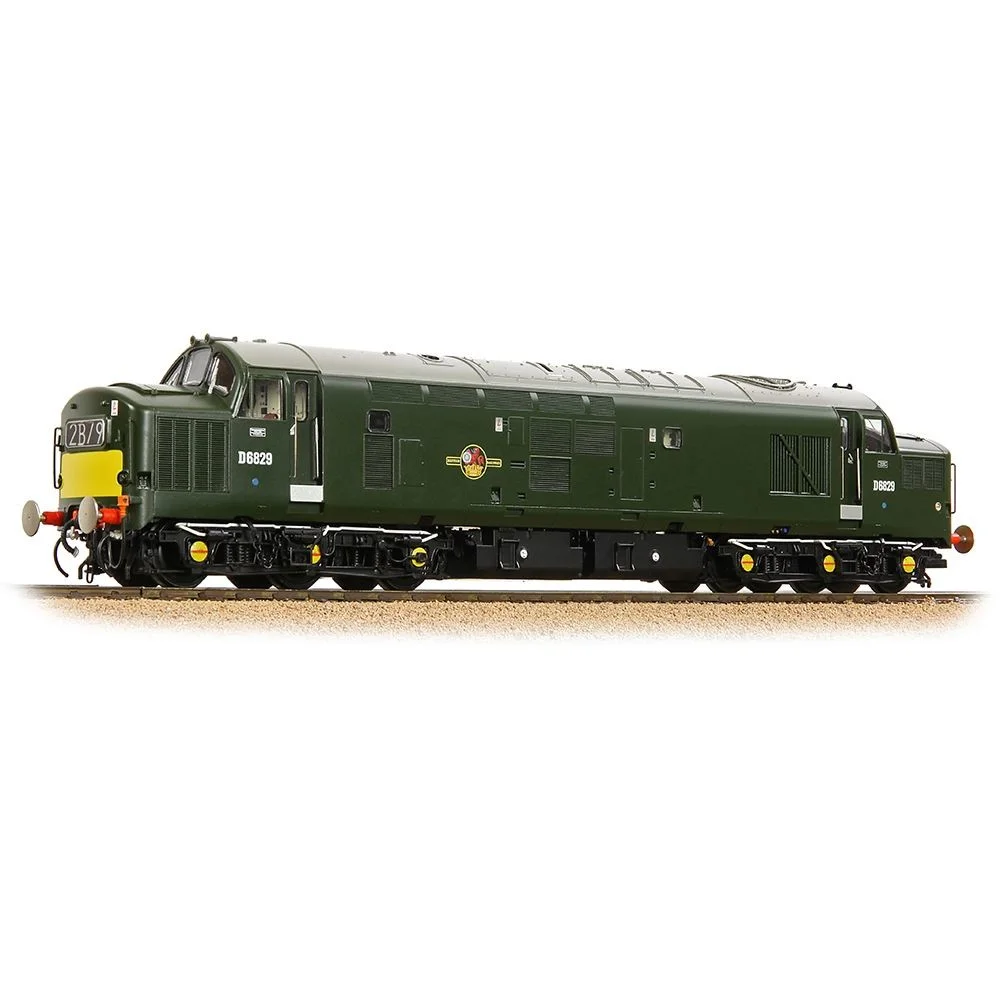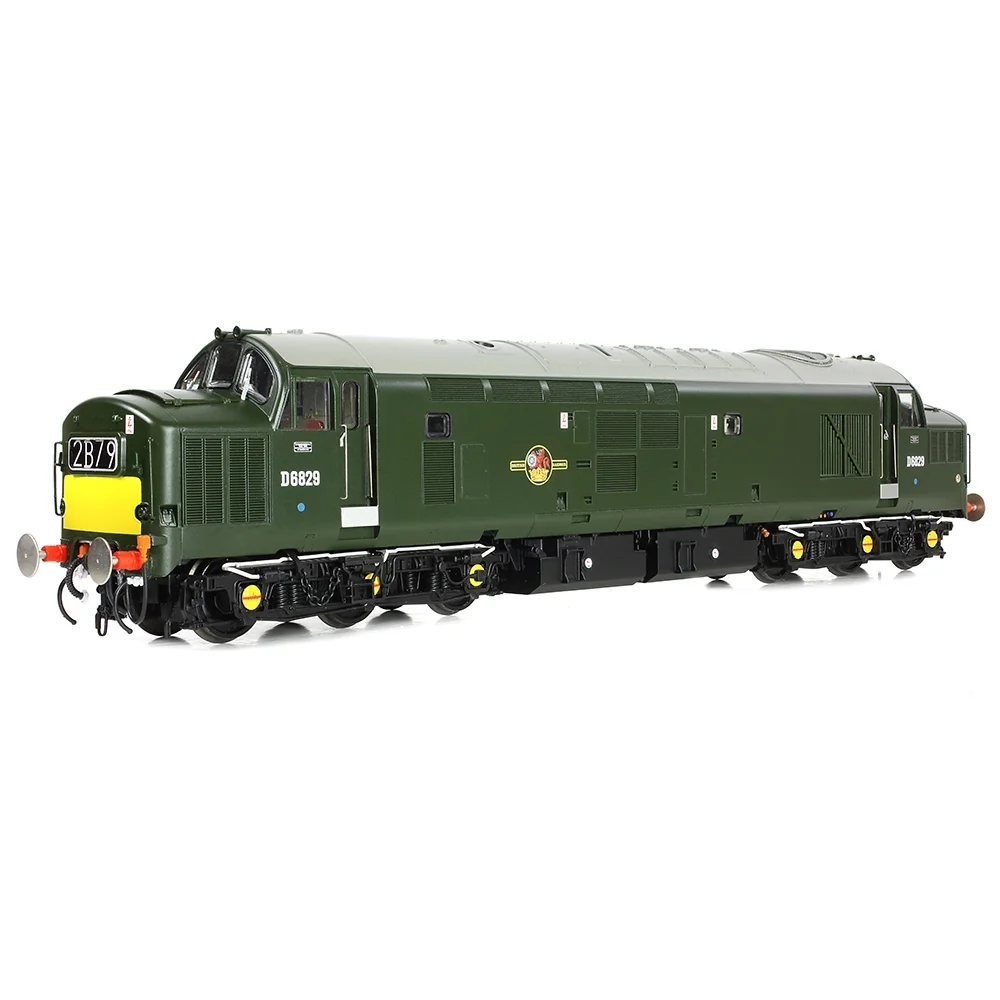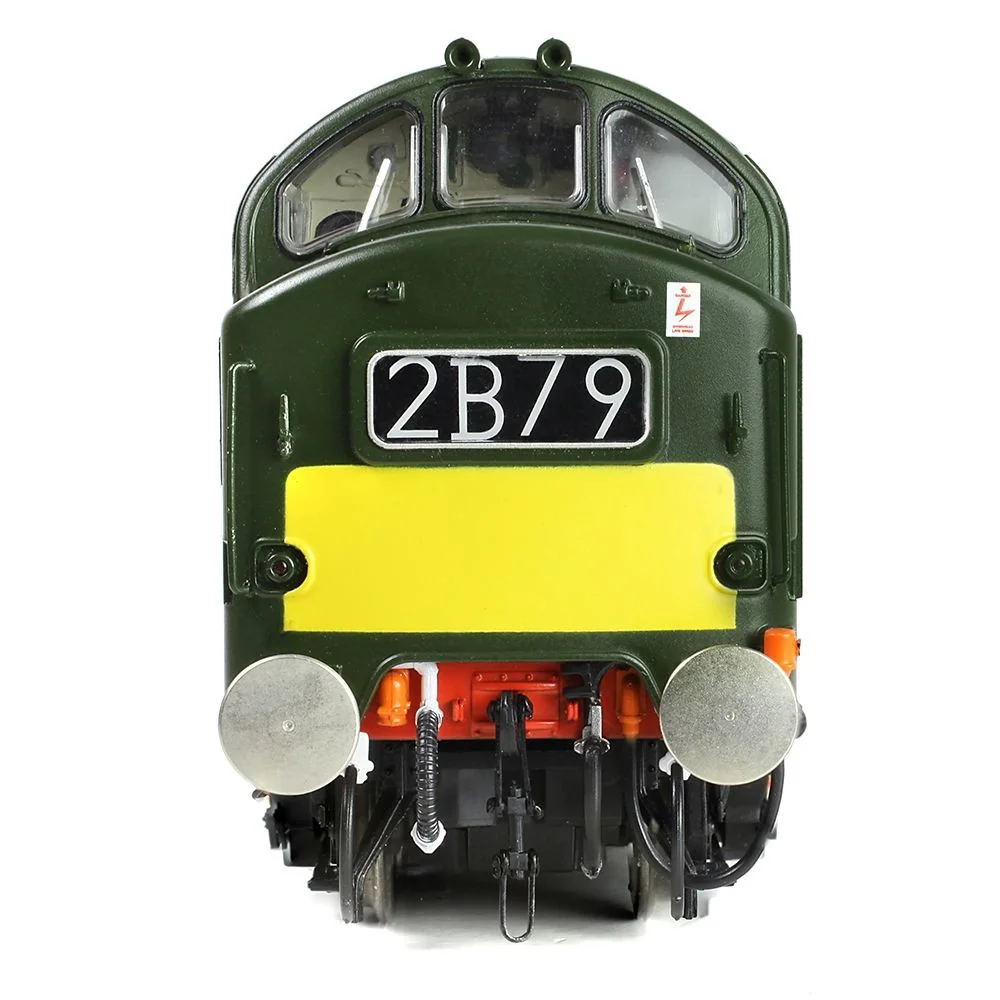Bachmann 35-306
British Rail Class 37/0 D6829 British Railways Green with Late Crest
Tooling
The British Rail Class 37, an English Electric Type 3 diesel locomotive, has long been a favourite among enthusiasts. In 2022, Bachmann Europe unveiled an all-new tooling for its OO gauge (1:76 scale) Branchline range, replacing previous versions and setting a new benchmark for fidelity and technology. This upgrade followed the success of the Class 47 retooling and was designed from the rails up using original drawings, site surveys, and extensive research.
Tooling Features
- Scale: OO gauge (1:76).
- Construction: High-fidelity plastic bodyshell with a diecast metal chassis for strength and weight.
- Detailing: Numerous separately fitted parts including handrails, lamp irons, jumper cables, etched fan grilles, NRN aerials, and bufferbeam detail packs. Sprung metal buffers are standard.
- Cab & Interior: Fully detailed and painted cab interiors with legible placards and optional crew figures.
- Couplings: NEM362 pockets with detachable tension-lock couplers.
- Variants: Extensive tooling suite covering Class 37/0 (split and centre headcode) and Class 37/4, with detail variations for boiler fittings, bogies, and headcode panels.
Mechanical & Electrical Specification
- Motor: Five-pole, twin-shaft motor with twin flywheels for smooth, powerful performance.
- Drive: All-axle drive with electrical pickup from all wheels; separate metal bearings for each axle.
- Chassis: Diecast metal block and bogie towers with diecast gearboxes for durability.
- Minimum Radius: Second radius curves (approx. 438mm).
- Lighting: Directional headlights and tail lights, cab and engine room lights on DCC. New “Yard Light” mode allows red tail lights at both ends.
- Weighting: Integrated diecast chassis for excellent adhesion and haulage.
DCC Capability
- DCC Ready with a Plux22 decoder socket.
- Factory SOUND FITTED versions use Zimo MS450P22 decoders with authentic sound projects.
- SOUND FITTED DELUXE models include a motorised radiator fan and tinted windscreen glazing.
- Dual Fitted speaker system pre-installed on all models for enhanced sound reproduction.
Liveries Produced
The new tooling has been released in a wide range of authentic liveries across multiple eras, including:
- BR Blue and BR Large Logo Blue
- Railfreight Red Stripe and Triple Grey
- Regional Railways
- Colas Rail Freight
- Direct Rail Services (DRS)
Reviews & Commentary
The 2022 upgrade has been widely praised for its accuracy, exceptional detailing, and technical sophistication. Reviewers highlight the exquisite livery application, lighting features, and smooth running qualities. SOUND FITTED DELUXE models, with their motorised fan and tinted glazing, have been described as “premium experiences.” However, some commentary notes the high price point compared to competitors such as Accurascale, sparking debate among enthusiasts.
Media & Social Media
Video reviews and social media discussions emphasize the model’s fidelity and performance. Popular YouTube reviews commend the finish, tampo printing, and sound quality, while noting that the model is aimed at the high-end market. Enthusiasts on forums have praised the rotating fan feature and cab detailing, though some question the necessity of a complete retool given the quality of previous versions.
Bachmann's Description & Specifications
The British Rail Class 37 is a favourite among enthusiasts and modellers alike and, having been a firm fixture in the Bachmann Branchline OO scale range for many years, in 2022 an all-new model of this iconic locomotive was launched. Built to unprecedented levels of accuracy and fidelity, the new Branchline model incorporates the latest technology and shares many common features and specifications with the award winning Bachmann Branchline Class 47. Finished in original BR Green livery with Small Yellow Warning Panels, this Class 37/0 depicts one of the locomotives delivered to the Western Region, No. D6829.
- Bachmann Branchline OO Scale
- Era 5
- Pristine BR Green livery with Small Yellow Warning Panels
- Running No. D6829
- Equipped with a Plux22 DCC Decoder Socket – recommended Decoder item No. 36-570A
- Length 245mm
DETAIL VARIATIONS SPECIFIC TO THIS MODEL
- Central Headcode Panels – Glazed displaying Blinds ‘2B79’ and ‘9A76’
- Western Region Lamp Brackets
- Headboard Clips
- Corner Handrails
- Original Buffer Beam Valances
- Round Oleo Buffers
- Original Windscreen
- English Electric Cantrail Grilles
- Etched Frost Grilles (optional part supplied separately)
- Welded Boiler Roof
- Original Open Boiler Port and Safety Valves
- Original Water Filler Door and Access Steps
- Fabricated Bogies
- Original Speedo Drive
- Mileage Counter
- Original Water and Fuel Tanks
- Water Filler Valve
Class & Prototype
- Class: British Rail Class 37/0
- Traction: Diesel
- Transmission: Electric
- Built: 1960-1965
- Total Built: -
The British Rail Class 37 is one of Britain's most successful diesel locomotive designs, with 309 locomotives built 1960-1965 by English Electric. Powered by the proven 12CSVT diesel engine producing 1,750 bhp, these Co-Co diesels served for 65 years on freight, passenger, and mixed-traffic duties across the entire BR network. Known as "Tractors" for their distinctive exhaust note, Class 37s worked everything from East Anglian expresses to West Highland Line services, Welsh coal trains, and nuclear flask operations. Extensive 1980s refurbishment created specialist subclasses including 37/4 ETH passenger variants, 37/5 freight, 37/7 heavy freight, and 37/6 Nightstar variants. Approximately 60 remain in mainline service with 30 preserved. Comprehensive OO gauge models available from Bachmann, Accurascale, and Hornby; N gauge from Graham Farish; O gauge from Heljan across extensive livery ranges spanning BR green through privatisation eras.
No prototype found.
Operator & Livery
- Operator: British Railways
- Livery: Green with Late Crest
British Railways transformed Britain's fragmented rail network into a unified national system following nationalisation on 1st January 1948. Created from the "Big Four" companies under the Transport Act 1947, BR operated most of Great Britain's railways until rebranding as British Rail in 1965, managing over 20,000 route miles and inheriting nearly 20,000 locomotives of diverse designs.
The organisation pioneered standardisation through its revolutionary BR Standard locomotive programme (1951-1960), producing 999 advanced steam engines under Robert Riddles' direction. These included the versatile Britannia Pacifics, mighty 9F freight engines, and mixed-traffic classes that incorporated the best features from all predecessor companies. The 1955 Modernisation Plan accelerated diesel and electric traction development, creating fascinating mixed-traction operations.
Notable achievements included establishing unified locomotive classification systems, introducing distinctive corporate liveries, and managing the complex transition from steam to modern traction. BR's six regional structure preserved operational diversity whilst enabling standardisation of practices, signalling, and rolling stock that had eluded private enterprise for over a century.
The BR era represents steam traction's final flowering alongside emerging diesel technology, creating unparalleled locomotive variety. Today, this heritage remains highly popular with railway enthusiasts through extensive preserved fleets, heritage railway operations, and comprehensive model ranges from manufacturers like Hornby, Bachmann, and Dapol, making BR subjects essential for authentic post-war British railway modelling across all scales.







